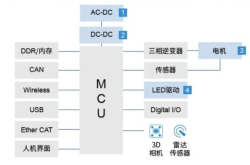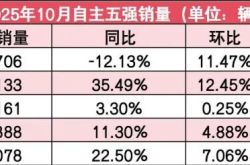The Evolution of AI Knowledge Bases: Navigating the Tide of Intelligent Transformation
![]() 05/29 2025
05/29 2025
![]() 526
526
The battleground for AI knowledge bases is crystallizing, serving as a microcosm of enterprises' intelligent transformation journey. While technological tools are indispensable, success hinges on whether organizations can leverage the knowledge base as a pivot to reshape their data culture and management paradigms. Pioneering enterprises that transcend the "Demo Trap" and deeply integrate knowledge bases into their business DNA will undoubtedly reap valuable "cognitive dividends" in the AI era.
Author | Dou Dou
Editor | Pi Ye
Produced by | Industry Home
In the realm of knowledge bases, a joke often circulates: "Five minutes of demo, one year to go live." However, since January of this year, this perception of slow adoption is being disrupted.
"Historically, building a knowledge base relied heavily on manual RAG (Retrieve and Generate) implementation. Now, numerous free tools outperform manual methods, and the pace of development is rapid," an industry insider shared with Industry Home.
Tool advancements are merely superficial; the more profound change stems from the knowledge base itself.
A report titled "AI in the Enterprise: Lessons from Seven Vanguard Companies," released by OpenAI, highlights that Morgan Stanley's consultants have witnessed a surge in knowledge base usage, from 20% to 80%, drastically reducing search time and enabling them to devote more attention to customer interactions.
These shifts signify that AI is redefining the fundamental logic of knowledge bases: they are evolving from static information "warehouses" to "engines" for enterprise intelligent services.
To grasp this transformation, we must first understand the qualitative shifts in knowledge bases.
I. Knowledge Base Becomes an Imperative for Enterprises
By early 2025, with the advent of tools like DeepSeek, the maturity and usability of large model technology have significantly advanced. Major foundation model vendors are transitioning from technology competitions to application deployments, with the knowledge base serving as the central link.
"Firstly, knowledge management capability is the cornerstone for building enterprise agents. Ultimately, these agents must utilize the enterprise's own knowledge system to deliver services," explained a cloud vendor executive, revealing why foundation model vendors rely on knowledge bases: large model deployments necessitate enterprise-specific knowledge to ensure accurate and reliable services.
In the context of general large models, the absence of a proprietary knowledge base can lead to "hallucinatory" responses, impeding their effectiveness in nuanced enterprise scenarios. Integrating RAG technology enables models to retrieve information in real-time from the enterprise knowledge base, significantly reducing error rates and ensuring accurate outputs.
Secondly, knowledge base-based intelligent customer service and assistant solutions have gained widespread recognition, unlike early, vague AI explorations. Research indicates that incorporating knowledge bases significantly enhances customer satisfaction and accelerates customer service response. For instance, a health consultation platform utilizes AI chatbots to handle daily consultations, reducing human customer service orders by 65% and saving over $50,000 annually in support costs.
Therefore, the knowledge base has become a critical question for large model vendors and enterprises aiming to realize AI's commercial value.
"The hype around large models is immense, but their actual deployment scenarios are still relatively limited. The knowledge base is undoubtedly the smoothest path forward," Da Zhiqian, Vice President of Tencent Cloud and Head of Tencent Lexiang, told Industry Home. This year has witnessed a surge in market demand for knowledge bases, with Da Zhiqian noting, "Since the beginning of this year, demand has exploded, increasing two to three times."
This surge in demand corresponds with frequent supply-side actions.
Alibaba, Baidu, and Tencent, as representatives of large model vendors, provide underlying large language models and RAG retrieval enhancement technology. For example, Alibaba Cloud Bailian and Tencent Cloud Intelligent Agent Development Platform (formerly the Large Model Knowledge Engine) utilize the knowledge base as a retrieval enhancement module to supplement the large model's understanding of enterprise-specific knowledge.
Agent platforms develop agents and incorporate built-in knowledge base functions. Enterprise-level agent development platforms such as Tencent Cloud Intelligent Agent Development Platform, Bytedance's Kouzi, AI Agents Flow, and BetterYeah integrate knowledge management, retrieval, and dialogue orchestration. These platforms support vector storage and retrieval of massive documents and offer visual process design to facilitate rapid construction of conversational intelligent applications.
SaaS knowledge base providers focus on cloud services for enterprise knowledge management and online Q&A. Products like Tencent Lexiang Knowledge Base and HelpLook assist enterprises in swiftly building centralized knowledge bases and embedding AI Q&A robots.
With the collaboration of foundation models, large models + RAG, agent platforms, and SaaS knowledge base vendors, the industry ecosystem is gradually improving, driving the rapid penetration of AI knowledge bases in specific enterprise scenarios.
II. From "Warehouse" to "Engine": Qualitative Shifts in Knowledge Bases
In the sales sector, addressing diverse service object needs is inherent. A software enterprise often receives various customer inquiries when its products are in use.
Previously, the enterprise dedicated about 60% of its time to assisting sales staff in resolving these issues, 80% of which were repetitive and had standard solutions.
Faced with this inefficient and costly operational bottleneck, the enterprise introduced AI technology for optimization. With AI assistants, the proportion of self-service problem-solving increased to 30%. Additionally, 80% of previously untapped "tacit knowledge" was now accessible, reducing the time sales staff spent searching for answers.
The combination of large models and knowledge bases has brought remarkable changes compared to traditional knowledge bases.
"After establishing the AI knowledge base, lawyers' overall efficiency has significantly improved. What used to be an eight-year training period is now reduced to six years," according to a specific case study by Tencent Lexiang.
This stems from the qualitative shift in knowledge bases supported by large AI models.
Traditionally, knowledge bases helped users find answers through full-text retrieval. The retrieval system only provided document locations and related results but not direct answers. However, the fusion of large models and knowledge bases enables context recognition and direct solution generation, drastically enhancing query efficiency and user experience.
Furthermore, AI technology has enhanced construction, operation, and maintenance efficiency. Traditional knowledge base construction often required scriptwriters and manual annotation. Now, after uploading documents, AI models automatically generate Q&A content, with humans only needing to select and review. This AI-assisted process improves efficiency and shortens the cold start period.
In the operation and maintenance stage, traditional knowledge bases often required re-annotation due to unclear theme divisions or large update requirements, even necessitating reconfiguration by scriptwriters. Currently, enterprises can establish a unified enterprise-wide knowledge base, and AI participation makes the operation and maintenance process more efficient, significantly reducing manual intervention and costs. Even when building a new knowledge base assistant, AI can assist with adjustments and optimizations without starting from scratch.
In summary, compared to traditional full-text retrieval, modern AI knowledge bases recognize context and directly generate optimal solutions. In construction and maintenance, AI automatically generates Q&A pairs, with humans only reviewing them, significantly shortening the cold start time and reducing subsequent maintenance costs. Based on a unified knowledge mid-platform, enterprises can rapidly deploy "lightweight" assistants for different scenarios without starting from scratch.
If traditional knowledge base applications were limited to simple document storage and information query, now, supported by large models, knowledge bases' capabilities have vastly expanded, transforming them into the "engine" of enterprise intelligent services.
III. Limitations of AI Knowledge Bases
However, are current AI knowledge bases truly mature and usable?
The reality is less optimistic.
Currently, AI knowledge bases are primarily suitable for scenarios with standardized processes and fixed content. For tasks requiring high creativity and unstructured processing, such as in-depth decision support or innovative content generation, their coverage is still limited.
Additionally, since knowledge bases rely on existing documents and rules, they perform poorly in handling situations lacking prior knowledge and requiring complex reasoning.
This is closely tied to several core challenges enterprises often face when building AI knowledge bases.
Firstly, scale and complexity management pose significant challenges. As the knowledge base grows, efficiently managing millions or hundreds of thousands of entries and ensuring smooth information flow between different teams and roles becomes a systemic issue.
Secondly, ensuring information accuracy and timeliness is difficult. Enterprise knowledge bases contain vast amounts of structured and unstructured data. Maintaining this information's constant update and validity, especially in large organizations, to prevent outdated or incorrect knowledge from influencing decision-making, is crucial for efficient knowledge base construction.
Permission and security management are equally important. Enterprise knowledge bases involve sensitive data. Ensuring this information is only accessed by authorized users and preventing leakage or misuse requires refined permission controls. "It's crucial to know what you can ask and what you can't. If the marketing team learns procurement costs, it would be a significant issue," noted Da Zhiqian.
Moreover, AI application challenges present technical difficulties. When integrating AI with knowledge bases, ensuring AI-generated answers are accurate and reliable, avoiding misleading content, is vital. Especially in large knowledge bases, AI should confidently admit "I don't know" instead of offering wrong speculations.
The adaptability of the technical architecture is also crucial. As technology evolves, the knowledge base architecture must continuously iterate and optimize, especially when combined with large AI models, to support more knowledge formats and interaction methods, enhancing user experience.
Finally, the issue of data migration and integration needs addressing. When enterprises initially build knowledge bases, integrating data scattered across different systems to avoid information silos is essential. This must support multiple data formats and simplify the migration process.
Overall, scale and complexity management, information timeliness and accuracy, permissions and security, technical architecture iteration, data migration and integration—these technical maturities directly dictate what AI knowledge bases can and cannot achieve.
"To transform an enterprise's AI knowledge base into a systematic project, ensure content accuracy and effectiveness first, allow the right people to access the right information based on permissions, and use AI technology to enhance retrieval and generation accuracy," Da Zhiqian emphasized. The key to AI knowledge base deployment lies in these "tricks".
Therefore, when selecting options, enterprises must consider both technology maturity and organizational collaboration. They must evaluate not only the platform's retrieval and generation capabilities but also its alignment with internal processes, permission architectures, and data governance.
For instance, SaaS knowledge base platforms focus on knowledge content management and industry scenario adaptation, emphasizing enterprise knowledge aggregation and optimizing retrieval and publishing processes within a unified platform. They prioritize knowledge classification, knowledge graph construction, and integration with existing office systems.
In contrast, agent vendor philosophies emphasize agents and process orchestration, executing specific tasks through RAG retrieval and large models, complemented by workflow and automation integration. Agent platforms typically offer a "zero/low-code" interface supporting business personnel in quickly defining goals and processes, embedding knowledge bases for Q&A or decision support.
Regarding system integration, agent platforms tend to provide rich API/RPA adapters to facilitate embedding agents into business systems, while SaaS platforms offer capabilities like cross-system aggregation and multi-language retrieval at the knowledge level.
From these vantage points, SaaS knowledge base solutions excel at swiftly constructing versatile knowledge applications, training modules, or help centers, all with relatively hassle-free deployment. On the other hand, Agent solutions are better suited for cross-system automation and multifaceted process scenarios, demanding higher design costs but enabling more adaptable execution of multi-step tasks and intelligent decision-making.
In essence, enterprises aiming to transform their knowledge bases into "intelligent engines" must weigh the merits and drawbacks of the aforementioned paths, considering their size, business intricacies, and security compliance requirements. This will allow them to devise practical implementation strategies. Knowledge bases have yet to evolve into a "one-size-fits-all" universal product.
IV. What Lies Ahead for AI Large Models + Knowledge Bases?
Despite several technical shortcomings that hinder AI knowledge bases from performing flawlessly in highly creative or complex reasoning contexts, the greater challenge lies in establishing a sustainable operational and governance framework within enterprises. This framework is crucial for transitioning from "small-scale pilots" to "large-scale deployments" and translating knowledge base capabilities into productivity.
From technological adaptation to organizational collaboration, and from service provider ecosystems to internal enterprise architectures, the path to facilitating this transformation is fraught with obstacles.
First and foremost, the implementation process must navigate through the "technology-organization" triple hurdle.
The first hurdle is data integration. An enterprise's internal data is dispersed across various systems, such as CRM, ERP, and document management systems, with diverse data types ranging from structured to unstructured. Migrating and cleansing this data is both time-consuming and cumbersome. Furthermore, the inadequate ability to process various types of information, including charts, audio, and video, leads to incomplete knowledge bases.
The second hurdle is scenario adaptation. While standardized customer service Q&A systems can operate efficiently, models often falter and respond slowly in specialized scenarios like R&D reasoning and supply chain decision-making.
The third hurdle involves organizational inertia and issues of rights and responsibilities. Knowledge management necessitates close collaboration between business departments, IT, and knowledge management personnel. However, in traditional architectures, knowledge "ownership" is decentralized, lacking a unified management mechanism.
Secondly, enterprises frequently grapple with the contradiction between standardized tools and customized needs when selecting a construction path.
Lightweight SaaS solutions are ideal for quick deployment in small and medium-sized enterprises but may encounter scalability limitations. Self-developed large model APIs offer extensive customization options, favored by leading enterprises, but come with high R&D costs and talent risks. The hybrid cloud Agent approach provides flexibility and control, meeting stringent compliance requirements, but faces the complexity of multi-cloud operations and maintenance.
Industry knowledge bases have emerged as a new competitive frontier. For instance, the "case reasoning library" in the legal industry and the "fault diagnosis library" in the manufacturing sector both require the integration of terminology bases, rule engines, and dynamic workflows. Therefore, service providers must transition from offering general tools to providing "expert systems".
The root cause of "siloed" construction within enterprises lies in the independent operation of various business departments, lacking a unified enterprise-level knowledge management system. The key to resolving this issue is establishing a "dual-track architecture" where the underlying unified knowledge mid-platform handles data aggregation, automatic classification and deduplication, and version management, while upper-level lightweight applications are constructed by various departments as needed. This approach ensures consistent and controllable data sources while allowing for flexible expansion.
As the trend of transforming knowledge base capabilities into productivity gains momentum, the supply side is likely to focus on two core competencies in the future: industry depth and end-to-end service loops.
Currently, the service provider ecosystem is diversifying and competing, forming three major camps. Foundation model vendors offer bundled outputs of "large model + RAG + cloud service," boasting a solid foundation but lacking sufficient industry experience. Agent platforms feature low-code process orchestration, easily integrating mid-to-long tail scenarios, but increasing process design complexity. Vertical SaaS solutions focus on niche areas, offering ready-to-use solutions but requiring improvements in scalability.
In the future, SaaS is expected to build scenario advantages based on its accumulated industry experience. Foundation model vendors may construct ecosystems and recruit SaaS providers to complement scenario solutions. Agent platforms are anticipated to serve as cross-scenario connectors under the guise of "process mid-platforms," assisting enterprises in deploying AI knowledge bases and achieving genuine productivity transformations.
From the current perspective, the essence of the AI knowledge base battleground is gradually becoming apparent, embodying the essence of enterprises' intelligent transformation.
While technical tools are undeniably important, the true deciding factor lies in whether enterprises can leverage knowledge bases as a lever to reshape their organizational data culture and management paradigm. Those enterprises that take the lead in overcoming the "Demo trap" and deeply integrating knowledge bases into their business DNA will undoubtedly reap valuable "cognitive dividends" in the AI era.





